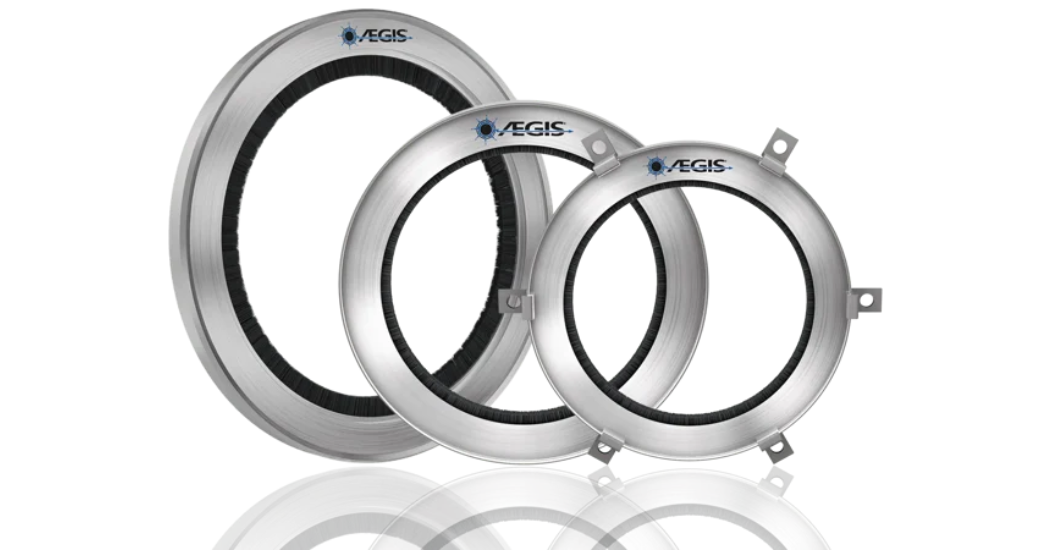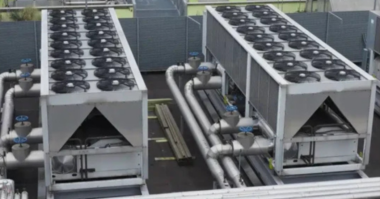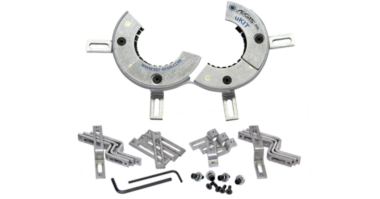AC motors with variable frequency drives (VFDs) often face the issue of premature failure, primarily attributed to bearing failures in the motor. Yet VFDs have been promoted by engineers, facility managers, building owners, and other stakeholders as devices that help ensure greater energy efficiency while also complementing the workings of automated machinery. VFD technology is one of the greener motor-related technologies used today, allowing users to control the motor’s torque and speed. VFDs can reduce power consumption for an electric motor by 30 percent or more, though the motors need extra protection to keep them from failing prematurely.
The reason modern AC motors equipped with VFDs are more prone to bearing damage is the drives’ use of three phase pulse width modulation, which produces stray voltage within the motor. This includes voltage on the motor’s shaft, leading to a harmful voltage across the bearings and the risk of electrical discharge if the voltage exceeds the grease’s breakdown voltage. Such discharge causes cumulative damage to the motor bearings.
Importance of Shaft Grounding Protection
These discharges cause electric discharge machining (EDM). While EDM is useful as a machining technique for hard metals, it shortens the life of electric motor bearings, reducing their reliability. To control switching, most VFDs use pulse width modulation to simulate a sine wave at the chosen frequency, assisted by insulated gate bipolar transistors.
The output from these drives creates a voltage on the motor shaft electrostatically, caused by the fluctuating common mode voltage (the average of the three-phase voltages). The voltage induced on the shaft tends to discharge through the bearings, resulting in bearing damage by EDM. Each discharge produces a microscopic pit. Over time, a concentrated kind of pitting known as fluting may develop. With a distinctive washboard pattern, fluting produces excessive vibration, noise, and heat when the motor runs. Once fluting has developed, bearing failure is imminent.
Shaft grounding is one strategy to control this damaging voltage, which can otherwise lead to bearing and motor failure. One particularly effective means to protect against this bearing damage involves installing grounding rings of conductive microfibers around the shaft.
How Shaft Grounding Rings Protect Bearings
Electric motors can reliably be protected against electrical damage by installing shaft grounding rings. These grounding rings are placed near either end of the shaft, with their conductive fibers in contact with the shaft. The ring dissipates the voltage on the shaft before it can build up to levels where it can overcome the grease’s breakdown voltage and discharge through the bearings. Another way to think of this is that a grounding ring provides electric current from the shaft with an alternate, low-resistance path: it flows around the bearings rather than through them. However you think about this, discharge through the bearing is prevented, which prevents damage to the bearing and grease due to EDM, preventing fluting and premature bearing failure.
Damaged bearings can lead to an increase in operation costs due to:
- Increased downtime
- Lost productivity
- Missed deliveries
- Reduced operating efficiency
- Unplanned outages
Measuring Shaft Voltage
Motors can be checked for destructive levels of shaft voltage using a digital oscilloscope. A multimeter (analog or digital) cannot be used, because shaft voltage buildup and discharge happens too rapidly for a multimeter to measure accurately. Only an oscilloscope with bandwidth 100MHz or higher can accurately measure shaft voltage, allowing the user to tell whether the level is high enough to cause electrical bearing damage and potential premature failure.
How Shaft Grounding Rings Protect Motor Bearings
Without a shaft grounding ring or other protection, shaft voltage will discharge through motor bearings or attached equipment to the motor frame and then continue to the (electrical) ground. Shaft grounding rings protect motor bearings by providing an alternative path to ground for charge from the shaft. Rather than going through the bearing, the current goes through the ring to the motor frame.
Current Protections for VFD-Equipped Motors
Most manufacturers offer what’s known as “inverter-rated, inverter-duty, or inverter-ready” electric motors, implying that these motors are already protected from damage due to harmful VFD-sourced voltage. Inverter-rated motors do include protections for the motor windings from the effects of VFD output, as required by National Electrical Manufacturers Association (NEMA) MG1 Part 31 guidelines. This protects the motor against premature failure due to winding damage.
However, this does nothing to protect bearings against damage from EDM. To more fully provide protection, these motors with VFDs installed need to be equipped with circumferential microfiber shaft grounding rings. Motor manufacturer warranties usually only cover the bearings for 90 days. Their logic is, if the bearing is defective, it will fail quickly. But fluting usually takes longer than three months to develop. Fortunately, Electro Static Technology – the manufacturer of AEGIS(R) Shaft Grounding Rings – offers an extended two-year warranty against fluting damage on motors with AEGIS rings installed.
Minimizing Damage
To mitigate electrical damage to bearings and keep VFD-driven motors and their associated systems running reliably, protective motor shaft grounding rings featuring conductive microfibers are necessary. Motor manufacturers can install this technology inside or outside the machine during fabrication, and retrofitting is also possible. However, when purchasing an electric motor, buyers should pay close attention to ensure it has the right protection.
Most original equipment manufacturers (OEMs) of electric motors provide product lines with factory-installed shaft grounding rings to protect from fluting, along with the required inverter protections. It’s important to ask an OEM before purchasing whether their motors offer this level of protection against damage by VFD control. To ensure that a new motor will provide trouble-free operation, it’s important for the buyer to specify that they require circumferential microfiber shaft grounding on any motors within machines that use pulse-width modulated VFDs.





Comments